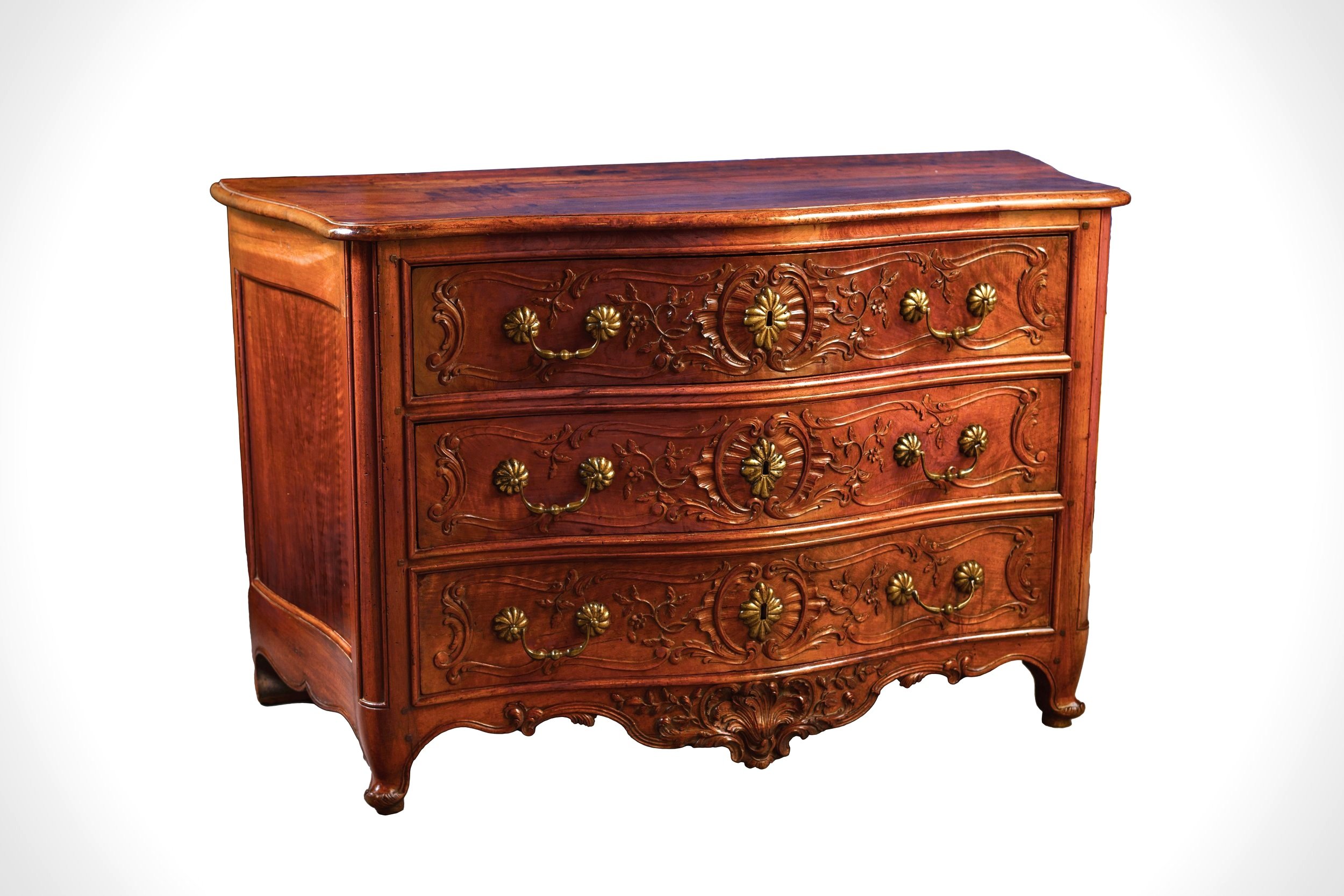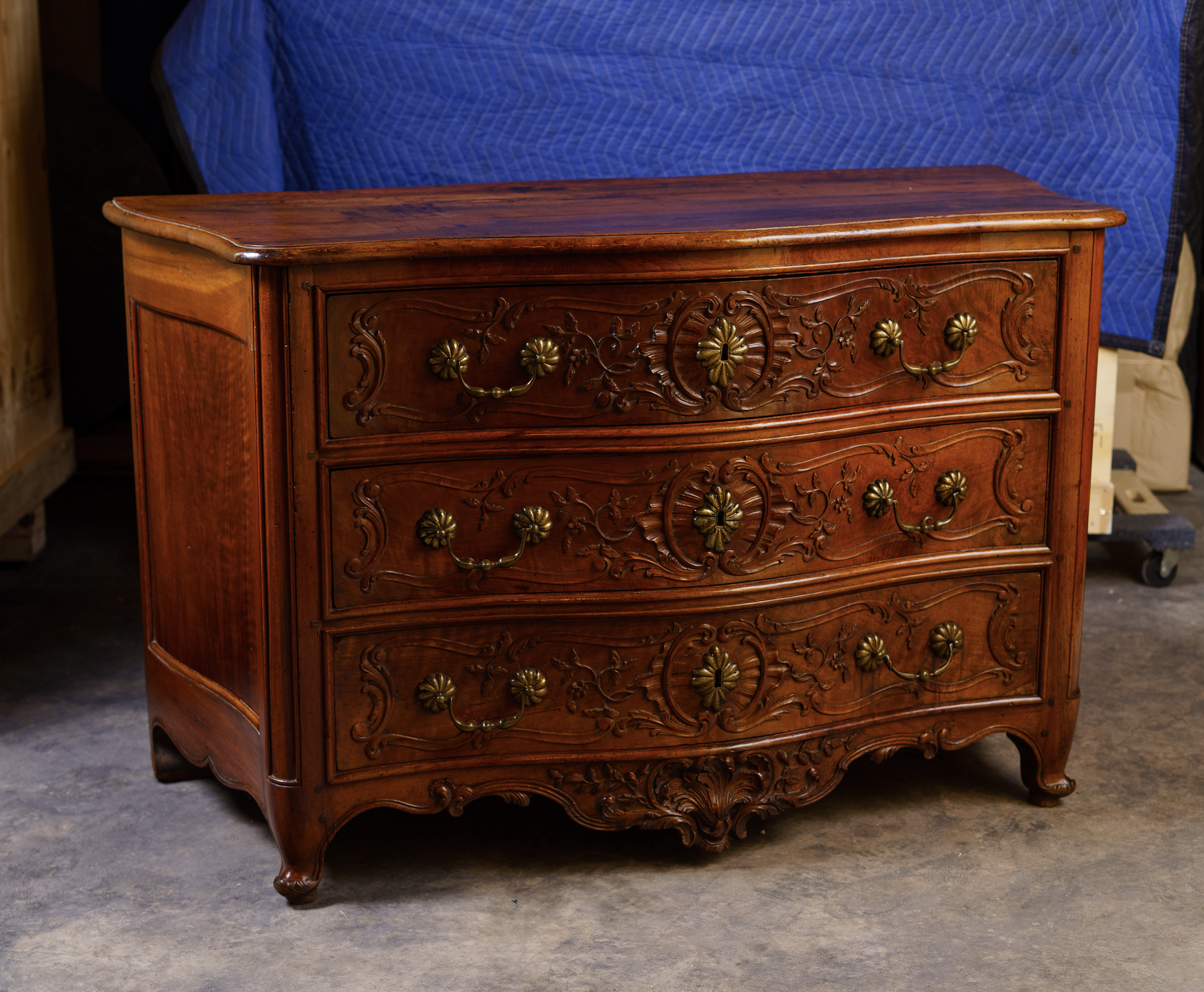Exceptional Commode Méridionnale circa 1750
This walnut chest of drawers, or commode table (a name which emphasizes a more decorative use in a reception room vs. a bedroom) is particularly graceful example of Louis XV period French regional work circa 1750. The region in question is southern France, known as le midi, but perhaps particularly the cities of Avignon, Aix en Provence, Toulouse, Marseille or Montpellier for this piece. It is first important to distinguish such publication or museum quality regional works from charming but simpler “country furniture.” The French language is careful with terms that categorize such fine pieces as that which exemplifies the height of the arts of a given region at a certain time. Although these works are technically “provincial” and not from the country’s capital, there is a sophistication to their design and a skill to their execution which is just as memorable as what one encounters among the more renowned and studied repertoire of Parisian decorative art.
This commode, although arguably as appealing as its Parisian counterparts from the same era, is made of solid indigenous wood rather than with exotic veneer (a hallmark of regional furniture). Instead of a marble top, it also features a warmer, solid wood surface. The gadrooned metal hardware, while particularly well attuned to the piece, is in brass rather than gilded bronze. The masterful sculpture, as on many great examples of regional furniture, notably of the bottom traverse here, rivals the aesthetics of what one might be used to collecting from Paris.
The piece appears to have endured only minor maintenance restorations, various rewaxings, and the replacement of small small nuts which fix the original handles into place. The roughly sawn and oxidized backs of the piece reveal only various faded train shipping labels from when this piece was moved. More importantly, the walnut top, made in two pieces, has not buckled with age and appears original to the chest.
Interestingly, the piece is signed inside with a hot iron stamp “GLV,” certainly the mark of a once sought after but now forgotten workshop which once fulfilled commissions for such unusually elegant pieces in the south of France. The brass or raw bronze hardware (hard to say what exact alloy was smelted) also bears various small stamps from what must have been a metallurgy guild, evocative of the famous and often apocryphe “crowned C” marks sometimes found on Parisian furniture hardware.
Height: 35.5 inches Length: 57 inches Depth: 25.25 inches
Myers & Monroe, LLC

